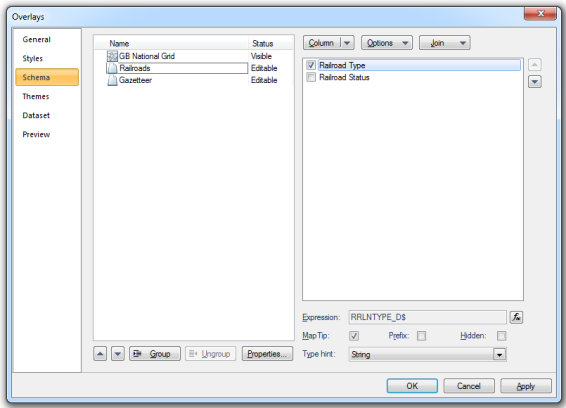Creating a Schema
- In the Overlays dialog, select the overlay and the Schema tab.
In the right-hand pane area you will see a list of properties available with this overlay. This list varies according to the type of dataset.
- To remove a property from the list, select the item and click the Remove button in the Column drop-down box:
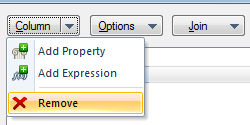
- To add a property or user attribute to the Columns list click the Add Property button in the Column drop-down box. The Pick Property dialog will be displayed:

The Pick Property dialog has two options:
- Existing built-in property, or user attribute - this option allows the Built-in Properties list to be expanded so that one of these properties can be added to the Column list.
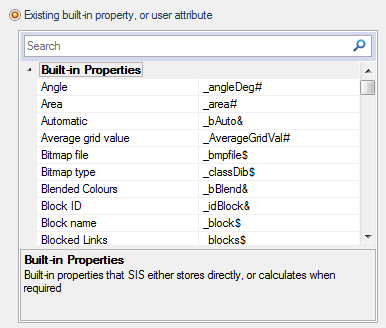
Select the required built-in property and click OK. - New user attribute - this option allows a new user attribute with its associated data type to be added.
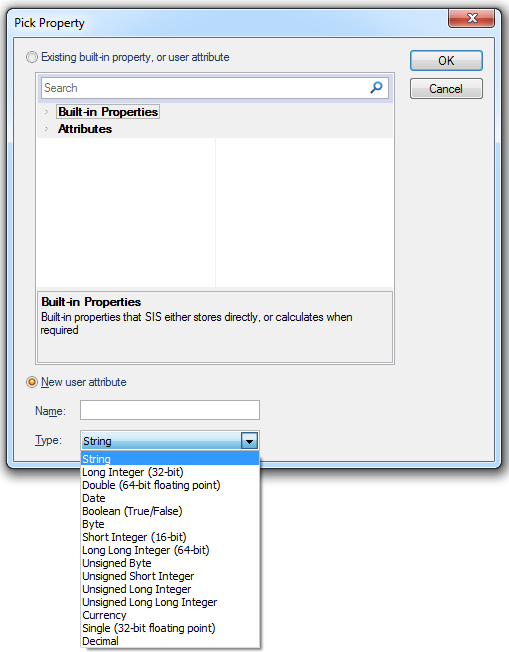
Enter the attribute Name, select the data type from the Type drop-down list, and click OK.
- To add an expression to the Columns list click the Add Expression button in the Column drop-down box. The Expression Builder dialog will be displayed:
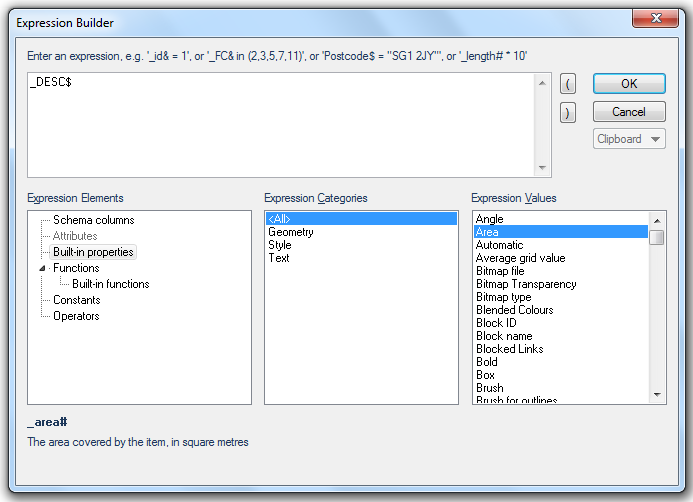
Type an expression in the top pane of the Expression Builder dialog. Use the Expression Categories and Expression Values panes to identify and select the operations and values:

The above example gets the Area value of items, rounded to two decimal places.
- To change the order of the Columns list items in the Overlays dialog, click on the item to be moved and use the up and down arrows (on the right-hand side of the dialog) to move it in the list.
- To change the property or expression of an item in the Columns list in the Overlays dialog, click on the item to be changed, click the fx button to display the Expression Builder dialog and do one of the following:
• type in a new property or expression
• select a property from the Built-in properties drop-down list. See Property Types.
-
Add a new expression by clicking on the fx button in the Overlays dialog and creating a new expression in the Expression Builder dialog.
-
You can select each item in the Columns list in the Overlays dialog, and change its description by clicking twice (not double-clicking), or by selecting the item and pressing F2.
It is the contents of this description field which is used for the heading of the column in the Table Window.
The initial width is the width of a field (in pixels) in the table window. When a table window is created, or the displayed overlay is changed, then the table window columns will be created from the overlay schema using this value as the initial column width.
Alignment is the alignment of the column header in its cell, and each value in this column within its cell. The default alignment for string values is left, and the default for numerical values is right.
By checking the Map Tip tickbox, the currently selected property is used when MapTips™ are displayed.
-
The Type hint allows the same attribute name to be used for different data types.
For example dataset which has attribute "abcd@" could be of type "string" and another dataset also with attribute "abcd@" could be of type "date".
The Type hint drop-down box offers the following options:
| Type |
Values |
| String |
Text |
| Long Integer (32-bit) |
-2147483648 to 2147483647 |
| Double (64-bit floating point |
-1.7976931348623158e+308 to +1.7976931348623158e+308,
smallest possible value (closest to 0.0): 2.2250738585072014e-308 |
| Date |
1 January 100 - 31 December 9999 (Gregorian calendar only) |
| Boolean (True/False) |
0 False, or -1 True (any non-zero will be interpreted as true) |
| Byte |
-128 to 127 |
| Short Integer (16-bit) |
-32768 to 32767 |
| Long Long Integer (64-bit) |
-9223372036854775808 to 9223372036854775807 |
| Unsigned Byte |
0 to 255 (0xff) |
| Unsigned Short Integer |
0 to 65535 (0xffff) |
| Unsigned Long Integer |
0 to 4294967295 (0xffffffff) |
| Unsigned Long Long Integer |
0 to 18446744073709551615 (0xffffffffffffffff) |
| Currency |
-922337203685477.5808 to 922337203685477.5807 |
| Single (32-bit floating point) |
-3.402823466e+38F to +3.402823466e+38F,
smallest possible value (closest to 0.0) 1.175494351e-38F |
| Decimal |
Holds signed 128-bit (16-byte) values representing 96-bit (12-byte) integer numbers scaled by a power factor of 10. The power factor is a property of the storage method and is invisible to the user. The Decimal property is only relevant to cursor-datasets.
Note: It is recommended that one of the floating point properties is used in preference to the Decimal property. |
-
Use Reset Columns to remove all columns from the schema, and re-add the default columns. The default columns are dependent on the dataset of the overlay.
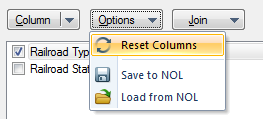
-
A schema can be saved either to use on another overlay or for use in a later session. Schemas are named objects, and are stored in libraries. You can store a schema in a library by clicking on the Save to NOL button in the Options drop-down box of the Schema tab in the Overlays dialog. You can recall them by clicking the Load from NOL button.
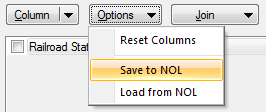
Save Schema New Schema name dialog:
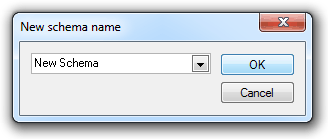
To recall a Schema click the Load from NOL button to display the Schema dialog:
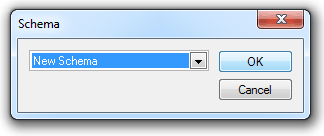
If you are linked to an external database, with data associated with the overlay, the Table button will be active and can be used to access that database, and add columns to the overlay schema from the table.
Note: Schemas used by Oracle, PostGIS and other cursor datasets do not allow the schema to be altered on the Overlays dialog. You must edit them directly inside the database, or use the Dataset/Properties local command (on the spatial database overlay’s local menu).
Top of page
Click to return to www.cadcorp.com
© Copyright 2000-2017 Computer Aided Development Corporation Limited (Cadcorp).
